Since the beginning, homebuilders with a desire for advanced engine design-or less expensive options than the pool of traditional powerplants-have gazed upon the engine lurking under the cowl of a certified light aircraft and thought, There has got to be a better way, especially where my project is concerned! In the interest of full disclosure, Im one of those guys, too. In fact, I was so taken with the promise of the Corvair conversion that I decided on the engine before I found a matching airframe. After a couple of false starts, my kit of choice turned out to be a Zenith Zodiac 601 XL.
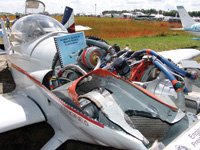
Tracy Crooks RV-4 may not be the prettiest of the Mazda Rotary conversions, but this flying test bed has logged over 1600 flight hours in Crooks endless pursuit of perfecting the art of rotary-powered flight.
Currently, there are about 20 of these ZenVairs flying in various spots around the globe, and more on the way, steadily racking up hundreds of successful flight hours. And there are just as many Corvairs flying in a growing number of other two-seat airframes, the only common denominator being the desire for an affordable and reliable 100-horsepower aeromotive engine.
This isn’t to say the Corvair is the only successful auto engine conversion
out there. Many cottage industries have grown around modifying Subarus, Suzukis, Volkswagens, Mazda rotary engines or even big V-8s from Detroit. Add to that the constant development work with smaller motorcycle or snowmobile engines for what are known as fat ultralights, and the choices (while not exactly vast) are considerable.
Apples and Oranges
An internal combustion engine is an internal combustion engine, right? So its no big deal to yank a motor from Ol Betsy and stick it on the projects firewall? Especially when you can use the latest in engine technology for much less money than the overpriced and antiquated Brand L or Brand C?
Before you roll up your sleeves and drag out the engine hoist, lets briefly compare a similar horsepower auto and aero engine of a size most homebuilders would be interested in. Many of you are probably aware of the following differences already, but a short refresher on the basics couldn’t hurt.
Size and Weight
Here is where the most similarity between auto and aero engines resides, both types in the 100- to 200-hp range (with similar accessories) range from just over 200 pounds to nearly 300. But add in all those items needed to transition from an air-cooled aero engine to a liquid-cooled auto conversion, and the conversion will be significantly heavier, without exception. Two items that will really pack on the pounds are the cooling system and the propeller speed reduction unit (PSRU), which are obviously absent in a typical air-cooled, direct-drive aero engine.
Why a PSRU?
Most propellers of a manageable diameter find their most efficient operating speed at 2000 to 3000 rpm. No surprise here-this is exactly where most direct-drive (no reduction gearing) aero engines are also designed to produce maximum horsepower and torque. Automotive engines, however, are designed to produce maximum horsepower near the top of their operating ranges, typically from around 5000 to 7000 rpm. Further, the ends of automotive crankshafts are designed to mate with a transmission, rather than mounting directly to a propeller hub.
A PSRU not only reduces the engine speed to the propeller by roughly half, but also provides the massive thrust bearing needed to withstand the force of the propeller pulling the airplane through the air. Because of the considerable forces involved in transmitting power between the engine and propeller, the PSRU must be extremely rugged and overbuilt. This also means that PSRUs are by nature a heavy addition to an automotive conversion and will significantly shift the engines center of mass forward.
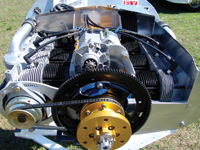
With six horizontally opposed, air cooled cylinders, the Corvair already has many things in common with traditional aircraft engines. With a displacement of 164 cubics inches, this engine typically produces between 100 and 110 horsepower when converted for aviation use. Can you say LSA?
Motor Mounts, Center of Gravity and Handling
A heavier engine package will require a beefier (read: heavier) motor-mount structure, will significantly alter the airplane designs center of gravity, and will also change its handling and maneuvering characteristics. In many cases, an existing airframe designed for an aero engine will need to have the wing moved forward to accommodate a significantly heavier auto conversion, and this is no small task. Putting more mass ahead of the firewall also moves the airplanes mass moment of inertia (MMOI), often reducing the effect of rudder and elevator on handling to the point of dynamic instability. And will those old firewall attach points hold up under the increased loads of the new engine at maneuvering speed?
Rotation Direction
Ever notice how the engine on most light singles turns the wrong way compared the normal rotation of an automobile engine? From the left seat in a single-engine tractor (not pusher) airframe design, the aero engine turns clockwise (to the right), and an auto engine mounted longitudinally usually spins to the left. This is no big deal, assuming that your propeller of choice is designed to spin in the correct direction, matched with the offset of the vertical stabilizer and/or motor mount to counter P-factor. Don’t laugh-more than one first full-power blast down the runway has ended with an unplanned sojourn into the weeds when the wrong rudder pedal was applied from force of habit. But its just that: habit. Properly flying a backward design is no trouble once the brief acclimatization period is over.
Ignition Isolation and Redundancy
Magnetos have been around for well over a century, producing a reliable spark from the physics of induction, where the lines of force from a magnet intersect with a coil of wire to make electricity. And just to make sure the engine keeps running, most aero engines have two independent ignition systems, from magnetos to spark plugs. The entire aircraft electrical system, including battery and alternator, can go up in smoke, and the prop will keep turning like nothing happened. Its arguably crude and inefficient by todays automotive standards, but it does work.
Modern automotive engines are full of computer-based technologies that precisely monitor engine performance and adjust ignition and induction parameters for maximum power and efficiency. The only problem is that if the engine control unit (ECU) goes tango uniform, or just loses its source of electrical power, the engine goes into a limp home mode or simply dies entirely. In a car, pulling over to the side of road or limping along slowly is a reasonable choice. In an airplane, there are no choices other than making a forced landing pretty darned quick.
Operational Modes
Imagine getting into your car in the morning, driving up a steep hill at full power for 20 minutes or so, then getting on to a racetrack where you pulled power back slightly (if at all) while zipping along at the highest speed available for hours on end. Insane, you say? Well, this is what we expect from our airplane engines. Fortunately, they’re designed for precisely this kind of abuse, typically overbuilt and producing only half of a horsepower per cubic inch of displacement.
Todays automotive engines have no problem producing a full one horsepower or more per cubic inch. But they were never designed to stand up to the rigors of full throttle operation for hours on end without modification. Instead, they spend most of their lives cruising along at about half of their designed redline rpm, while producing only a fraction of their maximum horsepower output. And don’t forget that two of the byproducts of converting petrochemicals into sustained, maximum motive force are heat and vibration, both of which are sworn enemies of man and machine.
The Environment
Operating any engine at a high power setting for hours at a time means that the cooling, induction and exhaust systems must also be up to the task. Auto manufacturers spend a lot of energy making sure that their engines have everything needed for continual cruise operation under varying conditions. With the more dynamic conditions that aircraft typically operate in, its even more crucial that cowling design and cooling system airflows are adequate to keep temperatures in the green. If you compare the amount of space available for an engine installation in the automobile and in your aircraft, you’ll most likely see at once that the flying installation will require some careful planning indeed-and perhaps a shoehorn or two.
So Is There Any Good News?
If I haven’t scared you off to the Robrucha cartoons yet, take heart. Those who take on building their own airplanes are a bright and ingenious bunch, and chances are good that those who have heard the siren song of automotive conversions have already spent a considerable amount of time, energy and money in the development of a successful installation just like the one you’re considering.
Further Auto Education
So why isn’t there a publication dedicated to those who are contemplating or actually installing an automotive conversion? Well, there is. Its called CONTACT!, a semi-monthly magazine that is completely nonprofit, depending solely on subscriptions for its existence. The brainchild of auto conversion enthusiast Pat Panzera, CONTACT! has become a valuable source of current information for those who just have to do it differently under the cowl.
A yearly subscription to CONTACT! runs $25 for six issues and is an excellent place to start if there’s no denying your own fascination with alternative aircraft powerplants. Whether or not you decide to fly behind one, there’s no such thing as having too much information, no matter what you may choose.
Corvette Conversion
Unlike most other automotive conversion developers, A&P Bud Warren wasn’t looking for a cheaper, more efficient alternative to the traditional aircraft powerplant. No, someone bet him that he couldn’t successfully use a garden-variety V-8 in an airplane back in 1992. Warren took that bet, and won.
Fast forward 16 years to Sun n Fun 2008, where Warren hits the ignition switch and a converted LS-1 Corvette motor rumbles into life. Settling down to a pleasing idle, passersby are instantly drawn in by the unmistakable music created by eight cylinders singing close harmony through unmuffled pipes, and the crowd becomes thick.
Nestled into the cowl from an RV-10, the LS-1 conversion is a sight to behold. There’s nothing haphazard or kludgey about Warrens handiwork-the combination of the 350-cubic-inch V-8 driving a propeller courtesy of a geared PSRU looks completely natural and, well, proper. Looks aside, Warren has proven the concept by flying his V-8 conversion for hundreds of hours in an Express 90 until an inflight fire resulted in a forced landing a few years ago.
I noticed a slight rise in oil temperature, Warren recalls, and then the motor coughed. I picked out a field and set up an approach. By the time we were about to land, the power died completely. The Express snapped off its gear on impact in the soft dirt, slid and spun a short distance, then stopped. Warren realized he had an engine fire, and the three souls aboard quickly exited the Express with just a scrape or two.
However, the airplane was completely lost to the resulting fire. Warren and company could only stand by and watch the conflagration until help arrived. Turned out it was a braided fuel line that failed, says Warren. Raw fuel was spraying on the exhaust header, caught fire and then heated up the oil temp sender before burning off the distributor cap.
The loss of the Express test bed was quite a setback, but it hasnt slowed Warren, with help from daughter Phyllis, from bringing his V-8 conversion to the Experimental aircraft market. Warren has been concentrating his efforts on the RV-10 market of late, as he feels the big four-seater is the perfect airframe for the 488-pound firewall-forward package (including prop).
The three-gear PSRU is innovative in its design, allowing the propeller to turn in the same direction as the crankshaft through the use of an intermediate idler gear. It also features its own oil pump and filter, which not only provides independent lubrication for the PSRU, but allows the use of conventional constant-speed aircraft props. Perhaps the most noteworthy development is the addition of a centrifugal clutch, which decouples the propeller when power is pulled back to idle. According to Warren, this system allows the engine to start without the additional load of the propeller, and also serves to effectively reduce harmful harmonics from power pulses. It was my intent to allow the motor to operate as it would in an automobile, says Warren, and Id like to get the clutch to the point where the prop will stay stationary at idle, kind of like a turbine.
Warrens PSRUs are designed to work with any Chevrolet four-, six- or eight-cylinder engine built since 1955, and are easily adaptable to a range of gear ratios in either a tractor or pusher arrangement. Given the horsepower and torque available from the V-8, Warren feels that a gear ratio of about 1.5:1 is ideal for most installations. The weight penalty is typically 63 pounds, and will add 10.25 inches to the business end of the attached engine. Priced at right around $9000, Warrens PSRUs certainly aren’t cheap, but when mated to a new LS-1 V-8, the total cost compares favorably with a similar big-bore Continental or Lycoming installation. And, of course, you get a modern powerplant with such niceties as sequential fuel injection, electronic ignition and increased fuel economy.
True, automotive conversions aren’t for everyone, but developers like Bud Warren are living proof that the search for that better mousetrap is endless where Experimental aviation is concerned.-R.L.
VW-Based Engines Today
In a recovering post-war Europe, a few hardy souls returned to building personal airplanes, usually small single-seaters. The war either destroyed local production capacity for small aircraft engines, or converted factories into producing war materials, so builders were forced to look for an alternate source of power. They soon found and adopted the Volkswagen. It was probably an obvious choice. Once the car body was peeled away, there was a four-stroke, four-opposed-cylinder air-cooled engine that produced about 40 horsepower. The resemblance to American light plane engines was striking and, like the American units, it was a bolt-together engine that almost anyone could understand, assemble and maintain. Better yet, it was plentiful and cheap.
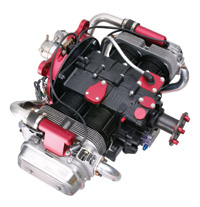
The AeroVee
Installed in Druine, Jodel, Taylor and many other small airplanes, the tiny VW gave adequate service and performance, though in many cases it was stretched to the limit and required careful handling to attain acceptable reliability.
As the number of Volkswagens grew, and the American market for them expanded (is there anyone who grew up in the 60s who didn’t own a VW at least once?) VW built larger, sturdier and more powerful engines to power them. The massive production base kept prices low, so VW engines became the subject of an immense aftermarket industry that supplied drag racers, dune buggies and power-mad teenagers with catalogs full of high-quality, reasonably priced components. Forged crankshafts and pistons, high-quality, big-bore cylinders, original cases and tuned exhausts were available simply by picking up the phone. It was perfectly possible to build up a high-powered engine that would bolt right into a Bug, but didn’t have an original VW part in it. The combination of VW and aftermarket engineering brought the horsepower available into more useful range for aircraft. The early 1.2- and 1.3-liter engines grew into engines displacing up to 2.4 liters and developing (according to their manufacturers) over 80 hp.
Because of the limited displacement, all VW-based engines produce power in rpm ranges higher than typical direct-drive engines, but lower than gear-reduced engines like the Rotax. Typically this is around 3500 rpm-a rather awkward spot from the propeller point of view. Props running at this speed (on direct-drive engines) must be quite short to prevent tip speeds that lose efficiency and create a lot of noise. Reduction drives are possible-both gear and belt drives are available-but they add weight and complexity. In rough terms, short, high-rpm props work well enough on fast, slippery airframes, and long, low-rpm props are better for slow, draggy (or STOL) designs. Thats why you’ll see direct-drive engines on airplanes such as the KR-2 and reduction drive units on WW-I replicas. No suitable constant-speed or variable-pitch prop has made it into widespread use. Finding the right prop for a VW, especially for a new design, remains something of a black art.
Today, a large variety of VW-derived engines is available to the homebuilder. There are direct-drive engines, with the prop on either the front or back. There are engines with belt and gear reductions. You can have fuel injection or carburetors, single or multiple. Ignitions come in all flavors-magneto, single or dual electronic. Starters can be mounted top or bottom, forward or rear. Don’t even think about hand-propping a VW. Most use light, short propellers, and when a cylinder fires, it can be impossible to get out of the way before the next blade arrives. There are even half-VW two-cylinder engines for really small airplanes. There are kits (AeroVee and Great Plains) and ready-to-fly engines (Revmaster, Limbach, Sauer, AeroVee, Great Plains, Valley Engineering) and for the adventurous, an endless array of VW and aftermarket parts that can be assembled into an engine. You can build-or rebuild-a VW completely for about the price of a pair of Lycoming cylinder assemblies.
One of the best features of the VW as aircraft engine is that so many have been used. There is a large pool of experience that provides a good idea what makes them thrive and what kills them. Not too surprisingly, the secrets to success are much the same as with any engine: Use the best parts available, pay careful attention to cooling and lubrication, and stay realistic about the power thats reliably available.
If you’re building an airplane that will fly well on 65 to 75 hp and can use an engine in the 160- to 180-pound range, look into the VWs. They can provide a lot of fun for little money. -Ken Scott
A Rotary World
Tracy Crook, of Real World Solutions, Inc., is arguably one of the bright lights in the world of converting the beer-keg-size Mazda rotary to aircraft use. His motivation? For me, it was having something different under the cowl, he said. There was the perception of economy, not so much in the initial acquisition and installation, since the cost was about the same as a used Lycoming. But when overhaul time comes around, I can do it for about 500 bucks, as opposed to 13,000.
True, the Mazda 13B rotary engine wasn’t a commercial success in the automotive world when first introduced. Many people expected the first rotary-powered Mazdas to compete favorably with economy cars such as the Ford Pinto. The Mazda rotary engine, however, produces around 160 hp and has fuel consumption more in line with a V-6 or a small V-8, so the perception was that it was uneconomical. Further, those original engines had short-lived Apex seals, whose job is akin to piston rings, sealing the combustion chamber. By the time the engineers got the seals right, the rotary engine had mostly come and gone.
To Mazdas credit, they stuck with it, says Crook, and its still in production today in the RX-8. The 13B engine was also widely used in the 1986 through 1999 RX-7, so they’re not exactly hard to find. Like most auto engines, they werent designed for use in airplanes, so some of the OEM accessories just aren’t suitable for aviation use. Things like the induction and ignition system must be replaced, and a PSRU is needed to get the revs down to something usable. After the original developer of the Ross PSRU passed away, Crook was left with a hole to fill, so he developed a replacement that uses off-the-shelf Ford planetary gearing.
The proof of a successful automotive conversion installation lies in its longevity, and this is where the rotary engines shine, according to Crook. After 856 hours, I meticulously tore down the engine and measured everything. The Apex seals were only 30% worn to their allowable limits, so Im thinking that you might expect a good 2000-hour TBO.
Crooks RV-4, with the 13B, cruises at 175 mph while burning 6.5 gph, which compares favorably with the performance typical of an O-320 or an O-360. The sweet spot for the Mazda is between 150 and 200 horsepower, says Crook, dependent on induction tweaking. If you’re good, you can get the power of an O-360 with the weight of an O-320. Crooks firewall-forward installation weighs 263 pounds, and he estimates that there are over 100 rotary installations currently flying.
If you’re asking if you should do it, you probably shouldn’t, says Crook. If you should be doing it, nobody can talk you out of it. For 90% of the builders, its probably not appropriate. Before you get into this, you need to know what support is and isn’t available. But its better now than its ever been. -R.L.

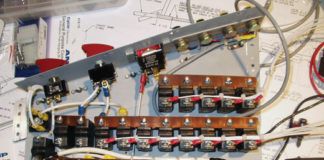
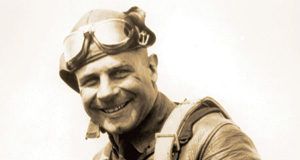
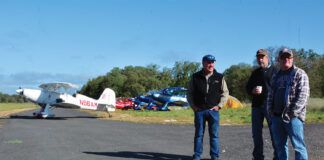
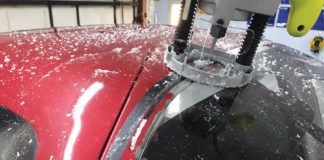
Nice read, thank you. I’m very disheartened by the fall of Tracy Crook Real World Solutions, that is the way I went with the purchase of an RX8 engine and Tracy’s gear reduction and engine management system. But now there is no back up , no parts , no replacement. I would like to buy another EC3 (Engine Computer that Tracy designed as a back up. Anyone have any ideas for me ?. Regards Noel